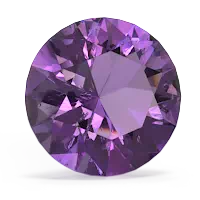

The celtic knot is an ancient symbol of the journey of life. With no beginning and no end, the knot represents the timeless nature of our spirits and the world we live in. A Amethyst celtic knot combines these concepts with the spiritual attributes of the Amethyst . An amethyst pendant is said to bring spirituality, tranquility and peace to the wearer. It is even said to help one succeed in business. Tourmaline symbolizes wisdom, strength of mind and eloquence. Wear a pink tourmaline pendant to become a more confident and impressive individual.